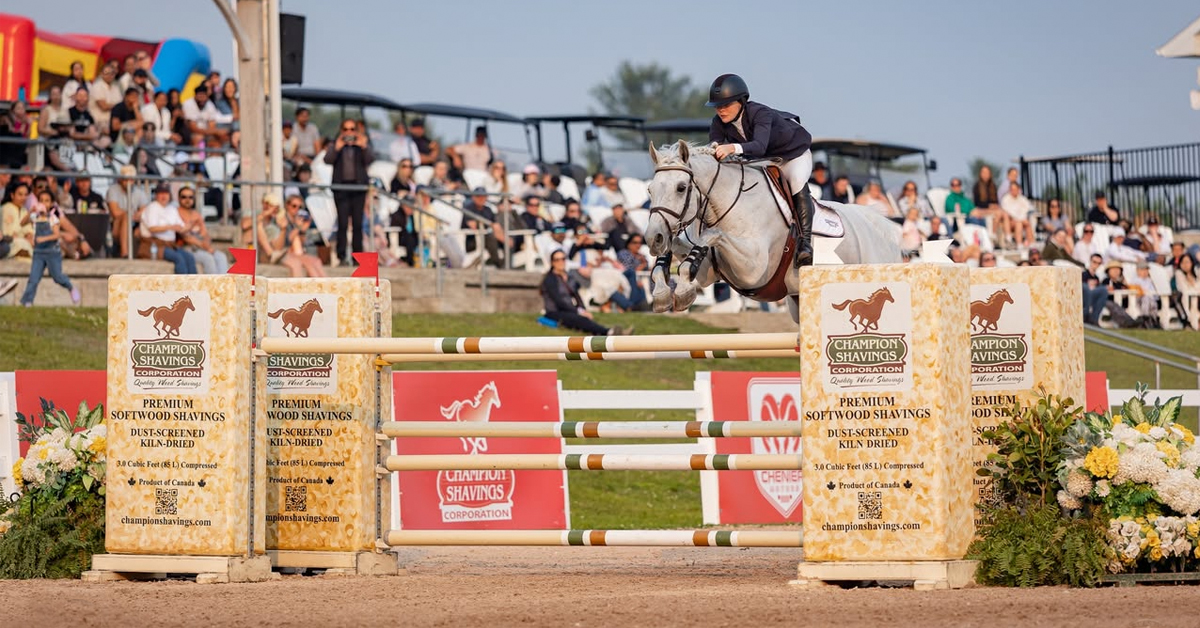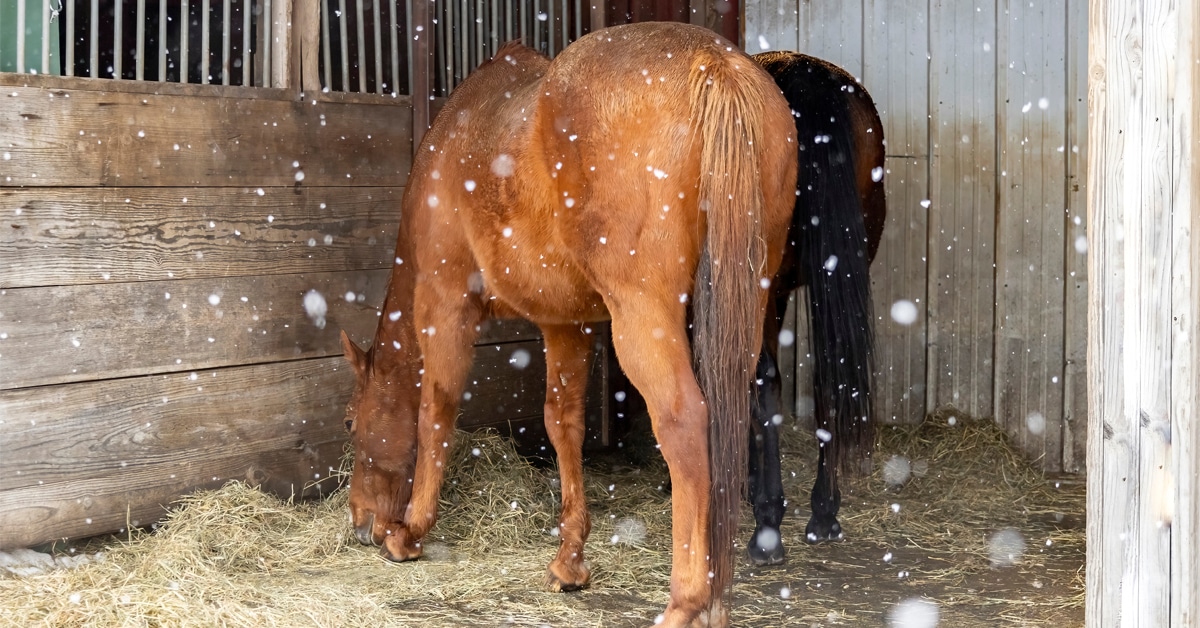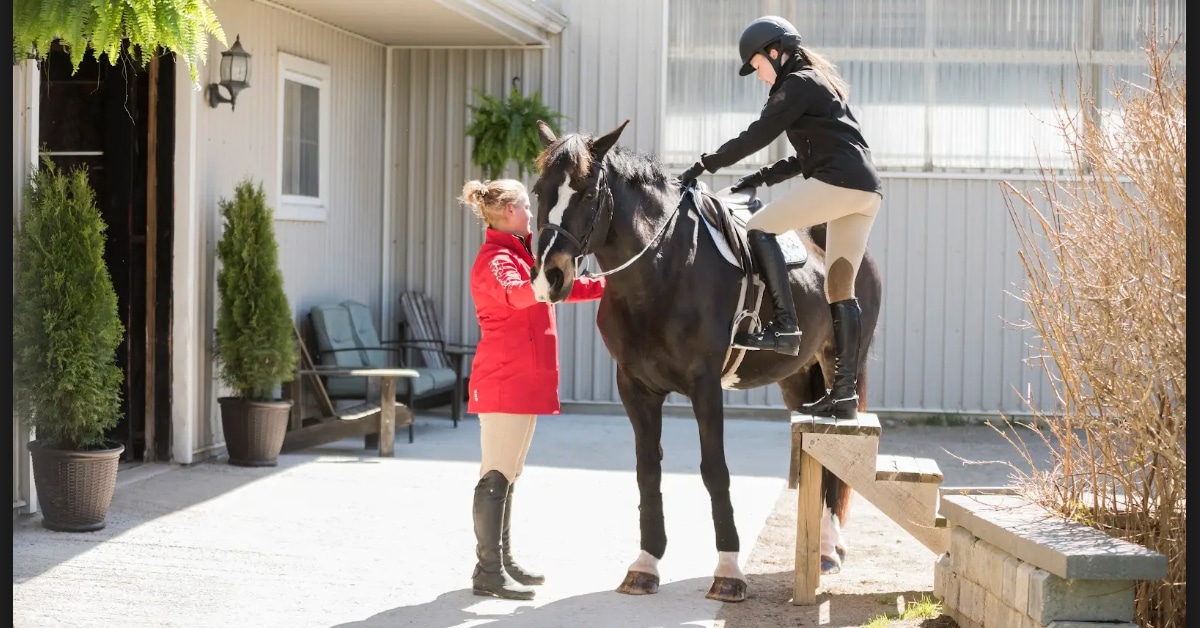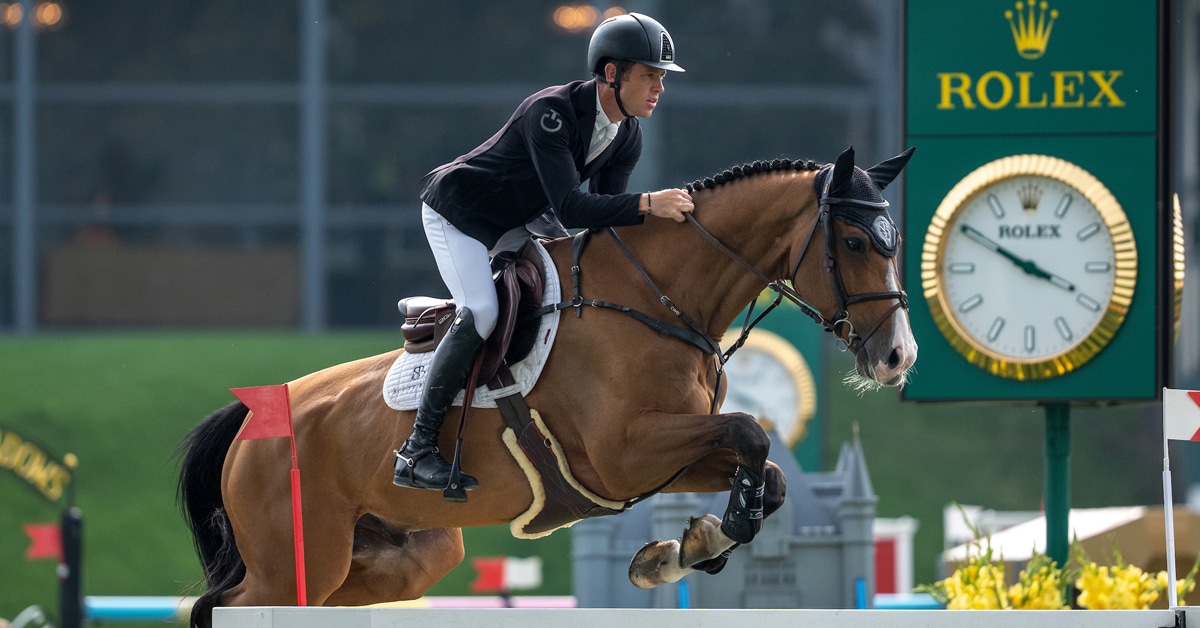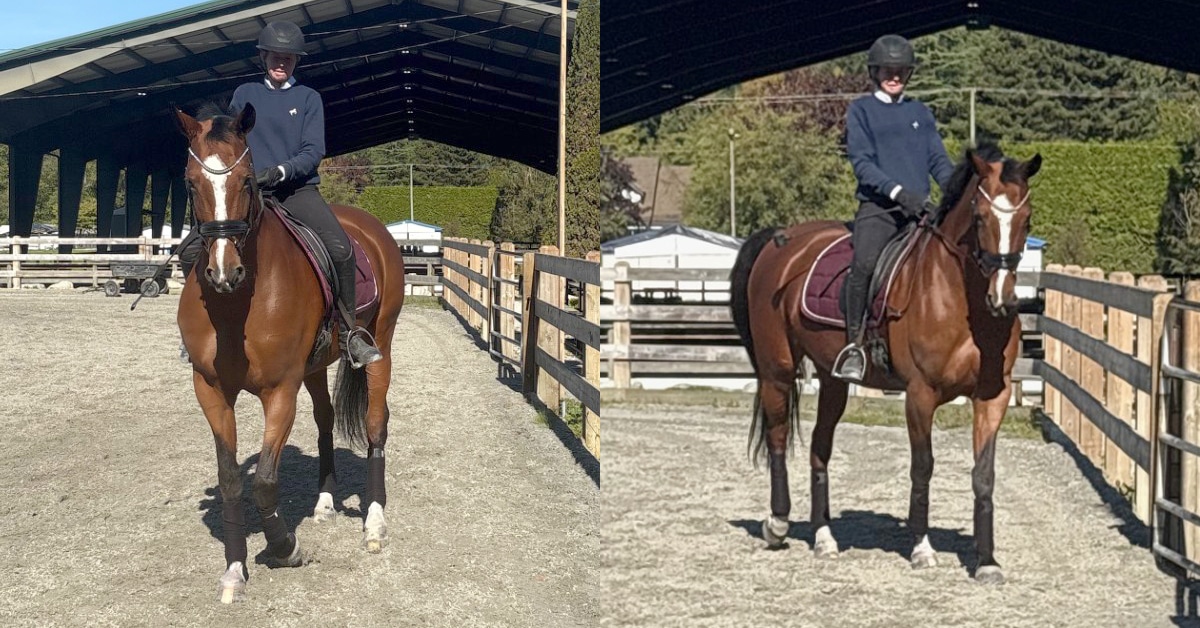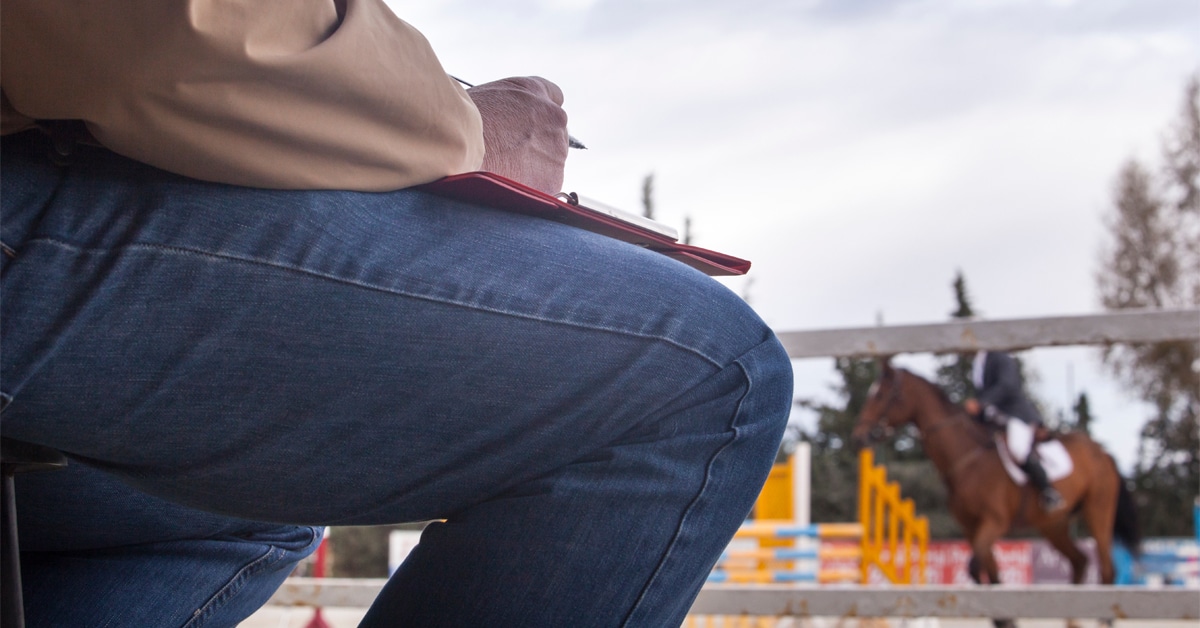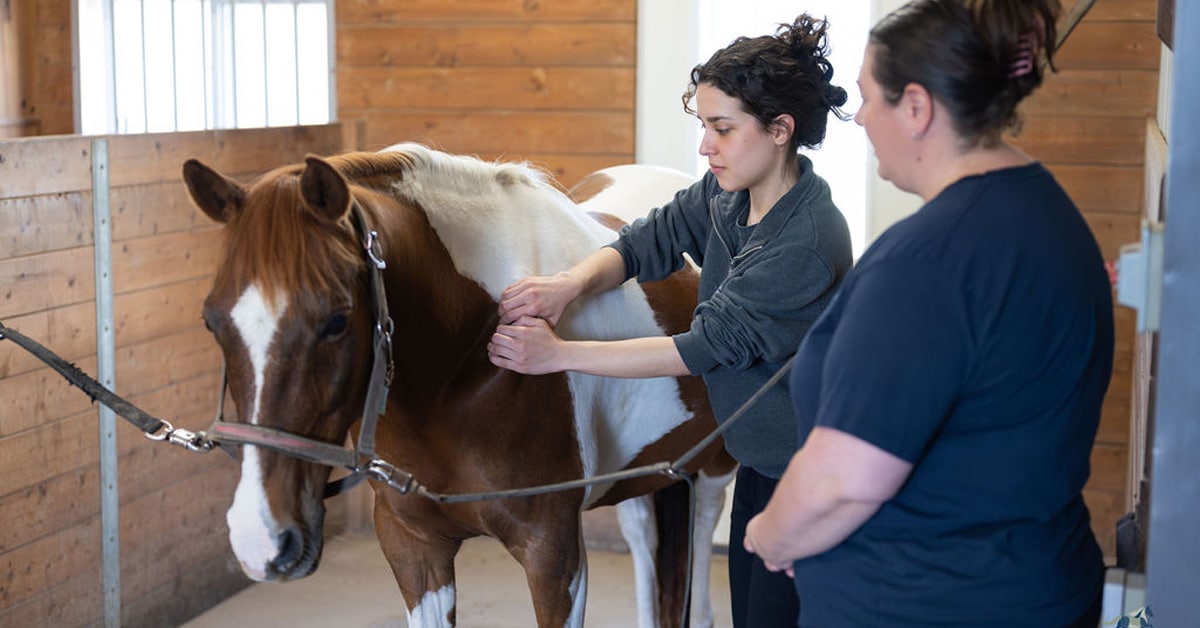As an Equestrian Canada (EC) and United States Equestrian Federation (USEF) official, one of my roles as a judge is to makes sure I know my horse show rules. Each time a competitor enters the show ring, I am not only judging their performance, I am also watching to make sure no rule infractions occur in my ring. If little Suzie has two refusals during her jumper round at an EC show (three refusals at USEF shows), she is eliminated from the class and it is my job to instruct the announcer to let Suzie know she is excused from the ring. If Suzie decides to use the whip after she has been eliminated, which is strictly against the rules, I radio down to the horse show steward and ask them to speak to Suzie when she comes out of the ring about not using the whip after elimination. When this happens, the steward will make their way down from the warm-up ring to speak with Suzie and her coach. Most competitors are aware that the steward’s job is to enforce the rules, but is that all they do? Last year, in an effort to better myself as an official, I went through the EC Stewards Program so that I could truly understand the role of my steward.
It was certainly an eye-opening experience. I learner stewarded at everything from open Saddlebred shows and provincial dressage championships to the International ring at Spruce Meadows. I made an effort to speak to many judges, competitors, and stewards in regards to a steward’s duties, and it became abundantly clear that the role of the horse show steward is often misunderstood.
Early Starts
At its core, a steward’s responsibility is to help, prevent, and intervene. Their main focus is animal welfare and ensuring a level playing field for all competitors. A judge is responsible for the show ring; a steward is responsible for the warm-up rings … and everything else.
While the judge’s official duties start the day of the horse show, the steward’s job begins months before the show, reviewing and approving the prize list and making sure all required information is included and correct. This is a requirement of all stewards, but they do not get paid extra for doing so. They are also responsible for ensuring each show has an appropriate emergency medical plan in place.
EC divides their stewards into three categories; Jumper, Dressage, and General.
Jumper stewards are required to be on the show grounds a half-hour before the show starts, although it is common for venues like Spruce Meadows to require stewards be on the show grounds two hours before the show starts so competitors have ample time to school in the warm-up rings. On any given horse show day, you may find a jumper steward monitoring the warm-up rings and:
- making sure all warm-up jumps are legal and the correct height;
- officially measuring ponies for their measurement cards;
- reviewing passports to ensure all information is correct;
- making sure competitors are using the correct tack and equipment;
- making sure tendon, ankle and bell boots are worn properly and are not too tight;
- answering any rule questions or concerns competitors may have;
- walking the barn aisles and ensuring no horses are in distress, water is available, barn aisles are not cluttered; and making sure no illegal activity is taking place.
Dressage stewards perform many of the duties listed above, plus they are responsible for ensuring the dressage rings have been properly measured, letters are in their correct places, and ensuring bit and tack checks are done as each competitor exits the ring after their test has been completed. Dressage stewards are required to be on the show grounds one hour before the show starts.
General stewards work at everything from breed to western to vaulting shows, and have the additional responsibilities of ensuring all western tack and equipment is legal, performing tasks such as measuring toe length after a Morgan halter championship class, ensuring the footing is adequate at a vaulting competition, supervising and recording time-outs if, for example, an Arabian loses a shoe during a rail class, or making sure the appropriate driving carts and harnesses are being used in a Hackney pleasure driving class.
Among the more serious responsibilities, stewards may give out yellow warning cards for infractions, are responsible for filling out abuse, eye witness, emergency medication and accident report forms, and monitoring inclement weather. The most important role is the welfare of the horses, which includes watching for everything from minor cuts to blatant abuse and everything in between.
Long Days
Once a show has finished, the steward’s job is not done. Each steward is required to fill out a report form after the show and follow through with any additional report forms that were filled out during a competition. They also normally remain at the horse show for an extra hour in case any conflicts or protests are brought forward.
A shocking revelation is that stewards are paid very little compared to horse show judges, many often receiving less than half the amount a judge would receive during the same weekend (stewards $150-$250/day vs. judges $250-$500/day). As a judge, I have the luxury of showing up approximately a half-hour before the start of the show, am often seated in a comfy chair in an enclosed judge’s booth, and have the pleasure of viewing the fabulous horses and performances that enter the show ring over the weekend. Once my day is finished, I’m free to head back to the hotel. A steward works much longer hours, usually on their feet for most of the day, outside whether it is raining, windy, or cold, and often remain on the show grounds up to an hour after the last class. Although many would say a judge has the harder task of watching each performance and placing the competitors accordingly, I would argue, as both a steward and an official, that the job of the horse show steward is much harder and bears much more responsibility than that of a judge.
So why would an official want the burden of working as a horse show steward when the job comes with so much responsibility, long hours, and little pay? The response is overwhelmingly ‘for the love of the horse and the greater good of the sport.’ So the next time you are attending a horse show, make sure you are appreciative of and respectful to the steward, as they are tasked with wearing many hats, ensuring our sport maintains a sense of safety, fairness, and humane treatment of the horse.
How to Become an EC Steward
There are four categories of EC stewards: Recorded 1, Recorded 2, Senior (General & Jumper) and Senior National (General & Jumper). After these four levels, a steward may choose to pursue their FEI Steward status.
- applicant must be 21 years of age or older
- have a horse-related background
- hold a valid EC Sport License
- submit an application form to EC
Recorded 1 Steward – works as an observer only.
To become a Recorded 2 Steward, a Recorded 1 Steward must shadow with at least three senior stewards, attend an EC national stewards clinic and received at least 80% on the exam. Recorded 2 Stewards are allowed to officiate alone at EC Bronze and Silver competitions and may officiate at Gold competitions with a Senior or Senior National Steward.
To become a Senior General Steward, a Recorded 2 Steward must officiate at a minimum of seven competitions in at least three different disciplines, attend an EC National Stewards clinic and receive at least 80% on the exam, and have officiated with at least three Senior Stewards.
To become a Senior Jumper Steward, a Recorded 2 Steward must officiate at a minimum of seven hunter/jumper competitions, attend an EC National Stewards clinic and receive at least 80% on the exam, and have officiated with at least three Senior Stewards.
A Senior National Steward must have at least five years of active experience as a Senior Steward. From there, a Steward can then apply to become an FEI Steward.
There are four categories of Dressage Stewards: Learner, Basic, Medium and Senior. The requirements are quite detailed; please refer to the EC Dressage rulebook. All stewarding information is available at equestrian.ca/programs-services/officials.
The Latest

